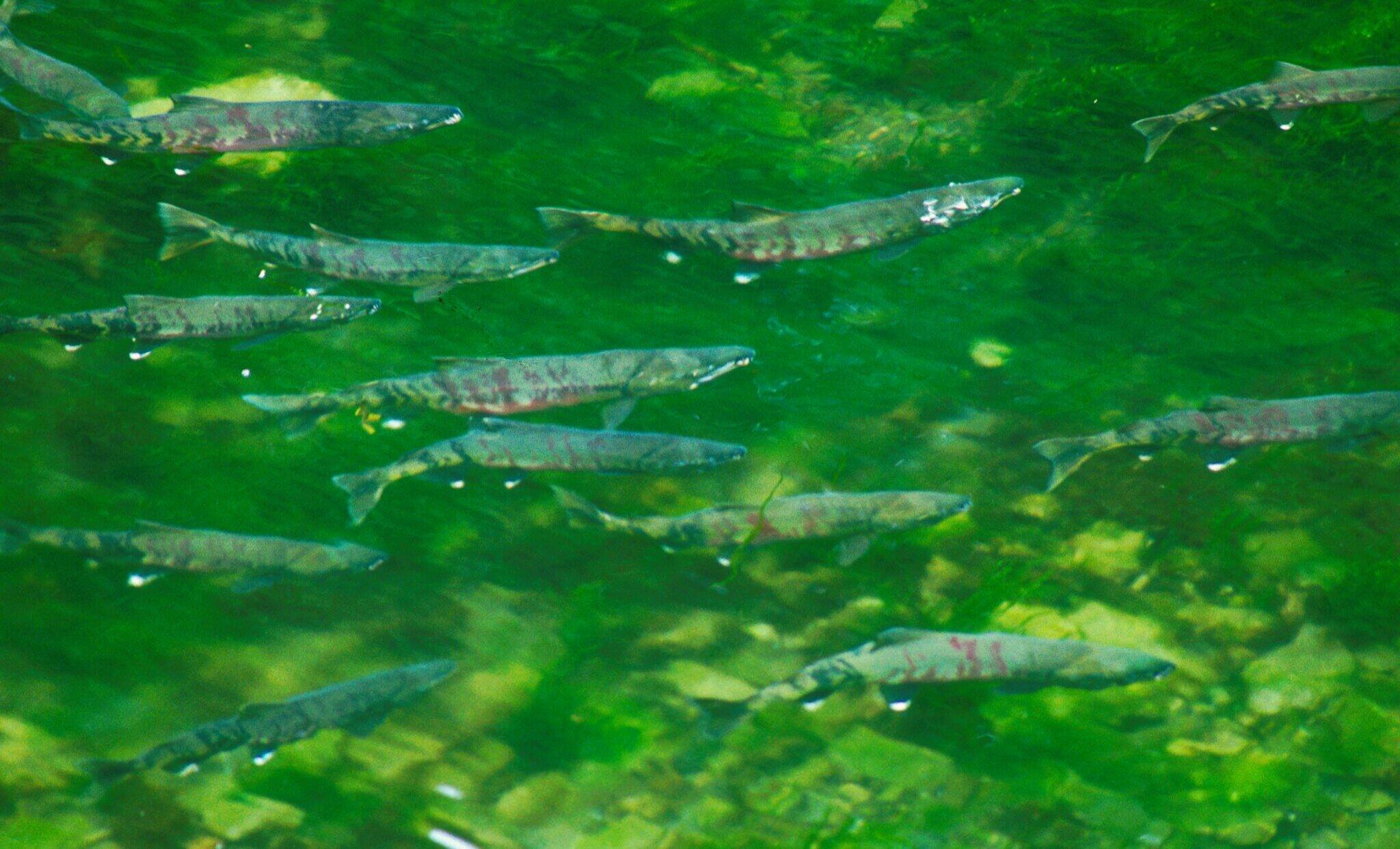Fishery managers overseeing Alaska’s faltering salmon runs should be able to rely on a more comprehensive and holistic approach to science that considers all habitat, from the middle of the ocean to freshwater spawning streams far inland, according to a task force report on salmon research needs.
The report was issued last week by the Alaska Salmon Research Task Force, a group established through a 2022 act of Congress to identify knowledge gaps and research needs. The task force comprises close to 20 members and includes scientists, fishers, Indigenous community representatives and agency managers. In addition to those members, the effort included a special 42-member working group focused on salmon problems in the Yukon and Kuskokwim river drainages.
The report follows a year’s worth of meetings and consultations.
To better understand Alaska’s salmon runs and how to address the problems besetting them, research should be along the lines of the Department of the Interior’s Gravel to Gravel Keystone Initiative, the report said. That gravel-to-gravel approach, which includes habitat restoration projects, was adopted by federal agencies specifically to address the salmon crisis in the Arctic-Yukon-Kuskokwim region, which includes the portion of the Arctic that drains into the Yukon.
“Prior salmon research efforts have undoubtedly enabled important advancements in our knowledge and understanding of salmon abundance patterns across Alaska. However, when each research project is advanced and understood in isolation, which is the norm, we often fail to develop a synthesized and holistic perspective across the entire salmon life cycle,” the report said.
The report breaks down numerous issues of concern and has recommendations to address them.
Among the issues of concern are the state of food availability for salmon in the marine environment, which is affected by factors like competition from masses of hatchery fish and conditions like algal blooms; warming temperatures and extreme events, which stem from climate change and can create conditions that are fatal to salmon; can create fish-killing or damaging heat, along with other shocks; and interception of river-bound salmon by commercial fishing vessels targeting other species, an unintended practice known as bycatch.
Research should not be limited to fish and the waters where they swim, the report said. There should be more information about the people who depend on salmon, it said.
Some recommended changes are already underway.
The report calls for better technology to be employed, for example, an effort already underway at the Alaska Fisheries Science Center, a branch of the National Oceanic and Atmospheric Administration’s Fisheries service.
The center is updating its fisheries survey program, making modifications in response to climate change and incorporating more modern technology that was not available in the past. Some of the new technology that is planned in the future will use sophisticated imaging to track phytoplankton and zooplankton, said Maggie Mooney-Seus, a communications manager with the Alaska Fisheries Science Center. Phytoplankton and zooplankton are the tiny marine plants and animals that make up the bottom of the food web.
Imaging technology can identify species much faster than the sampling process used up to now, and identifying and tracking that plankton is important because fish prey is shifting as water warms, ice retreats and the potential for harmful algal blooms increases, Mooney-Seus said.
The report also recommends more use of Indigenous knowledge and cites the value of cooperation with communities, tribes, multiple government agencies and international organizations like the North Pacific Anadromous Fish Commission. Anadromous fish are those like salmon that swim up rivers to spawn.
A key international player in Alaska’s salmon fortunes is Russia. The report includes salmon data from Russia, and it notes that large amounts of hatchery fish are released into the Bering Sea from Russia. Despite the breakdown in U.S.-Russia relations that followed Russia’s invasion of Ukraine, there is still some cooperation with Russia through the North Pacific Anadromous Fish Commission, said Ed Farley, task force’s chair and the ecosystem monitoring and assessment program manager at the Alaska Fisheries Science Center.
“This collaboration is ongoing and is why we are able to provide hatchery release and salmon catch data from Russia,” Farley said by email.
Russian colleagues participated virtually and made presentations at a workshop last month in British Columbia on climate warming and its impact on salmon, he said.
• Yereth Rosen came to Alaska in 1987 to work for the Anchorage Times. She has reported for Reuters, for the Alaska Dispatch News, for Arctic Today and for other organizations. She covers environmental issues, energy, climate change, natural resources, economic and business news, health, science and Arctic concerns. This article originally appeared online at alaskabeacon.com. Alaska Beacon, an affiliate of States Newsroom, is an independent, nonpartisan news organization focused on connecting Alaskans to their state government.

